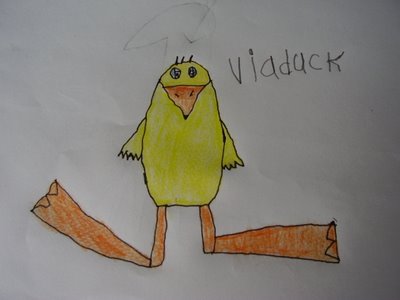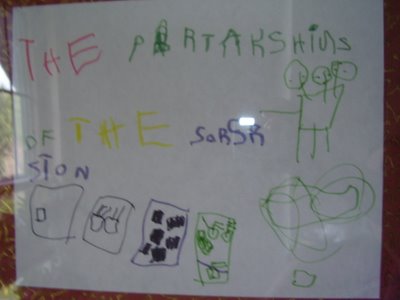Holiday gifts to make...

Firstly, I'm not even going to look & see when I last updated this blog- I'd be too embarassed! That said, I had wanted to post these ideas last year but didn't find the time before the holidays. Now we've got 2 years' worth of holiday do-it-yourself projects to share, so I hope they were worth the wait :)
I am a dyed-in-the-wool do-it-yourselfer when it comes to gifts & gift-giving. Most of the things I knit, weave, tie-dye, & stitch end up as gifts for someone, & I find it very satisfying to craft things personally, thinking of the intended giftee as I make them. That said, having a son with fine-motor difficulties has made me think about making things, & gifting in general, differently than I ever had before. As much as I want to pass on this value for home-crafted gifts to my son, I also don't want making things to become a burden or a chore for him. I want it to be as enjoyable for him as it is for me!
So- I waited until last year, when he was in 5th grade, & had had the benefit of 6 years of occupational therapy, to propose that he make his teacher & family gifts himself. He was up for it, so we discussed some project ideas & the one he was most interested in was making beaded bracelets for everyone (approximately 15 people). We looked through the bead catalogue (my favourite beading source is Fire Mountain Gems) & Brendan chose 7 colours of czech fire-polished, faceted beads that he really liked. I ordered the 8mm ones, to be sure that he wouldn't have too much trouble handling & stringing them. I also ordered some nice wooden beads to use to make bracelets for his male teachers :) We used 1mm powercord to string them on, which meant no clasps to worry about. The 1mm size also has more body than the finer elastic cords, which meant he didn't need a needle to string them. I took responsibility for tying the knots, & used a combination of square knot & overhand knots, with plenty of testing to make sure they've caught properly.

We set up a work-station at the dining-room table, with a piece of cardboard to work on, a tape measure (so he could measure his bracelets as he went & stop beading when they were long enough), snippers to cut the powercord, a very fine crochet hook (you could use a tapestry or darning needle, too) to tie the knot around so it can be snugged up against the beads, & a plastic organiser box with dividers for the beads. We decided to make at least 2-3 bracelets per session, so that he felt he was making progress, & kept a list nearby to check-off the recipients' names as he finished each bracelet. I also tagged each bracelet as it was made, since Brendan was choosing colours he thought each person would like. We started about a month ahead of time, & although he was getting a bit tired of the project by the time he finished up, he did finish before the school break, so that all his teachers & therapists could get his hand-made gifts before the holidays.

As you can probably imagine, Brendan's gifts were very well received :) Everyone really understood that these were dual gifts- not just hand-made personally for them, but made by someone who has worked very hard to achieve the motor skills he used to make them. And Brendan not only received the joy of having made gifts for those important to him, but the pleased reactions of the people who received them, & the stories... one teacher came back from holiday vacation to report that he'd been asked by more than one person where he'd gotten his cool bracelet :) Grammie (aka: my mom) is never seen without the bracelet Brendan made for her nearly a year ago, that's how much she loves & appreciates it :)

So, when the pre-holiday season rolled around this year we didn't talk about whether or not he'd be making his gifts, just what Brendan thought he'd like to make this year. Having spent 3 weeks this past summer in Japan, Brendan decided he'd like to make beaded "omamori" good luck charms for everyone. I'm sure that the omamori that you get at the shrines in Japan are either blessed or have prayers inside them, since they are supposed to protect from bad luck by absorbing the bad luck into them, but we decided that making something intentionally for someone, thinking about them as it's made, would serve the same purpose. ("Omamori" comes from the verb "mamoru" which means "to protect".)

So, out came the Fire Mountain catalogue & Brendan chose 3 types of focus beads- hemalyke twisted ovals, blue glass with gold details, & sodalite nuggets (he really loves blue :) We also ordered cell phone straps to attach them to & crimp beads with a little loop on them, to hang on the phone straps. I contributed accuflex beading wire & smaller beads (many different kinds of gemstones & shapes) from my stash.
When we sat down to begin them (after making a list of this year's recipients) I showed Brendan a few ways that he could use the wire & beads to make different shapes of omamori. I suggested that he keep them under 4" long & not use too many heavy beads on one project (when I told him that one of his teachers could use hers for self-defence, he lightened the bead-load a bit :). Brendan's favourite shape to make them was with a small stopper bead threaded onto a 6-8" length of accuflex wire, then to put the 2 ends of wire together & thread them both through bigger beads, in a row. Some of them he varied by threading small beads onto each wire, then bringing them together again through bigger beads. Brendan was really creative with his choices of bead combinations & really seemed to enjoy designing them. We finished them by putting both ends of the wire together through the end of the crimp bead opposite the loop, then crimping them tightly with pliers (Brendan became very good at the crimping & testing to be sure they've held). I did most of the intallation on the phone cords, since the jump rings take a lot of strength to open & it hurt his fingers to do it, even with pliers.
The great part of this year's project is that he's been so into it he's made extras (for himself, his best buddy, added other people to the list...). We started making these just last weekend & he's made all but 2 (as of this moment)- about 15 of them made! He's also been dropping hints to his teachers about what he's making for them :) Yesterday, after melting down over a frustrating bit in a computer game, I suggested he make some of his gifts as a calming activity... & he was calm & focused on beading within just a few minutes. When he finishes each one he holds it in his palm for a few seconds, to finish putting good vibes into it. That's my boy... :)
I hope these ideas will inspire others to create home-made gifts, too. Happy, happy holidays!!






